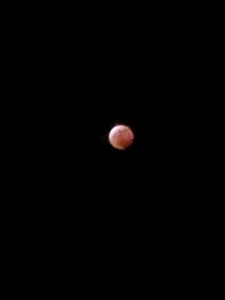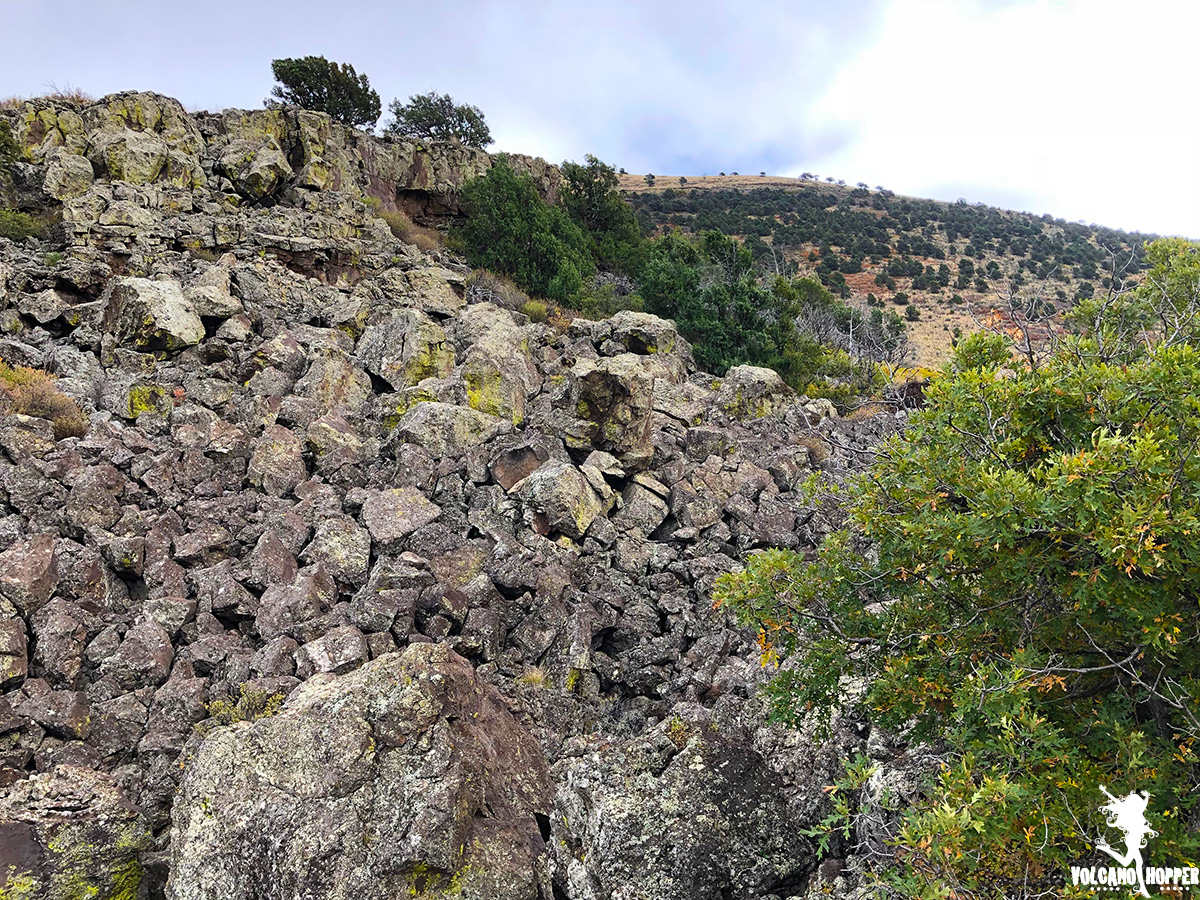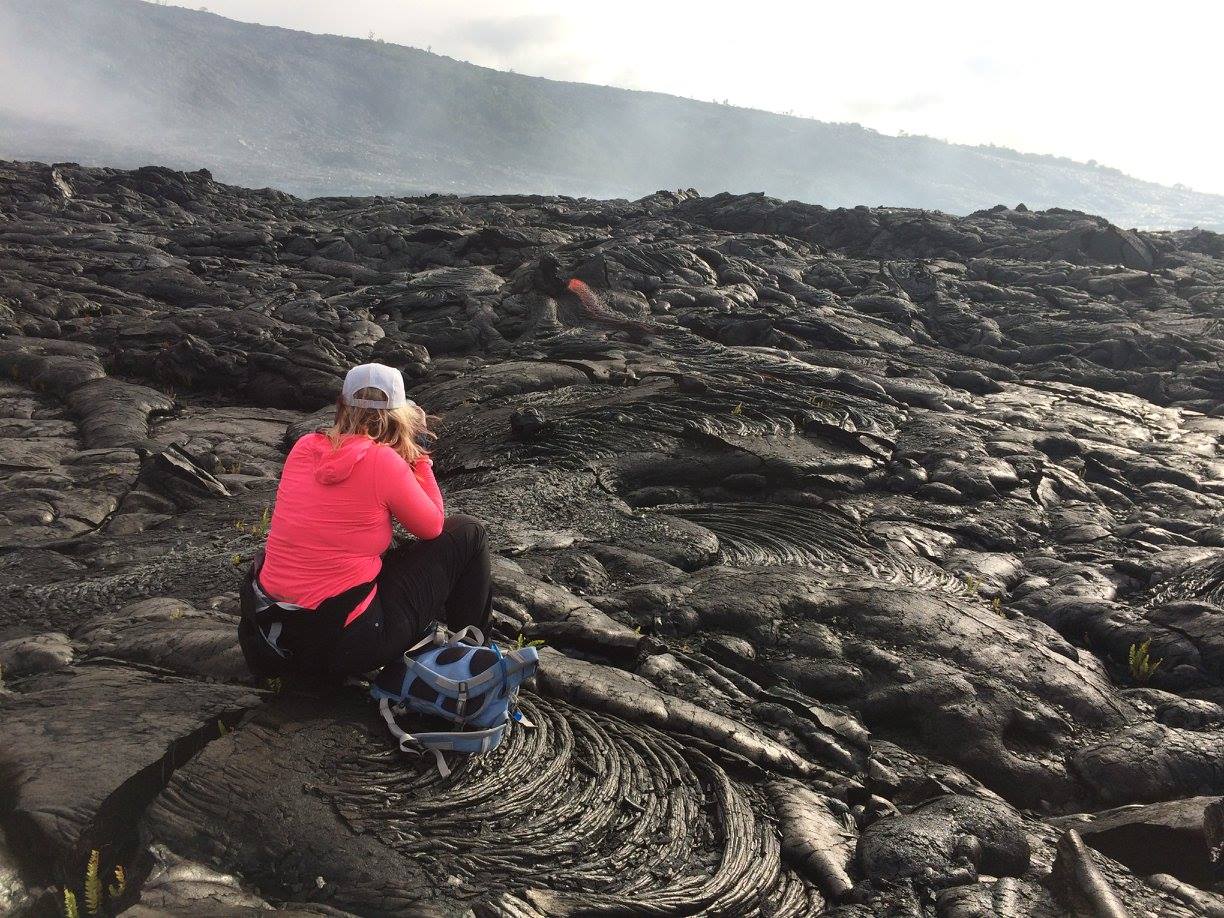VITAL STATS
Name: Earth’s Moon
Eruption Status: Dormant?
Last Eruption: Less than 100,000 years ago
Location: 238,900 miles out in space

Do you remember playing “The Floor is Lava” when you were a kid? If not, you should definitely start a game right now. Wherever you are. It’s a blast! But let’s play a different game today…
The Moon is Lava!
It certainly looked as though this might be the case last Sunday evening during the lunar eclipse. The usual pearly glow of the full moon (a super moon in this case) was replaced by a deep red glow as the Earth blocked the sun’s light. Lunar eclipses like this only happen when the Sun, Earth, and Moon are in a straight line. Earth completely blocks the sunlight from the moon, and what light does refract around the Earth’s atmosphere gives the moon a bloody red appearance. Phew! So that’sall it was? Good. But let me tell you a little secret, my friend. The moon IS lava.
When you look up at our moon, what do you see? One of the first things you’ll likely point out is the patches of dark and light on its surface. Does the Man on the Moon ring a bell? Astronomers – before the advent of telescopes and moon landers – used to think that these dark patches were seas. They named them “Mare” (Mahr-ray), which is the Latin name for “sea.” Only recently did humankind discover there’s barely a drop of water on the Moon, and these Mare were something different entirely.
They are vast “seas” of hardened lava.
Can you imagine what it might look like from Earth to see red hot lava flows flooding across the surface of the moon? Would just the leading edges of the flows glow? Or would it all be molten and leave huge swaths of glowing red across the moon’s face? It’s breathtaking to imagine.
So here are a few things to know about Mare:
– Most of them are on the side of the moon facing earth
– There are a few on the back side of the moon, but they are considerably smaller than the ones on the near side.
– They cover 15% of the total Moon’s surface, and 33% of the near side’s surface.
– Mare are old – approximately 3-4 billion years old.
So how did these massive lava flows occur? Most Mare are circular in shape, which suggests that they are filled in impact craters. The moon gets bombarded with meteors all the time. Some of the larger ones very likely fractured or weakened the crust of the moon, and molten lava rose through the cracks to fill in the craters. Since the moon has much less gravity than the earth, the lava is able to flow much further, faster. The moon’s lava is made of basalt – much like the Hawaiian volcanoes – and so the lava is more runny. So when the lava started flowing, it created massive basalt plains on the moon. The closest thing we have here on Earth is called a Flood Basalt.
But why are most Mare found on the near side of the moon? This is a question that scientists are currently studying and trying to find answers to. There are a lot of theories and some proven facts. Scientists do know that the near side of the moon has a thinner crust than the far side, which would allow magma to rise to the surface easily. Earth’s gravity may have helped in the endeavor.
Aside from the Mare, there are fascinating volcanic features to be found on the Moon. Sinuous Rilles cover the landscape. From Earth, they look like riverbeds or canals. In fact, they are lava channels and lava tubes where the fluid lava ran across the moon’s surface. Cones and lava domes dot the surface. While the moon’s lava is less explosive, due to a lack of water, it still erupted explosively from time to time. With less gravity, exploded material was flung farther, and less material accumulated around the vent. This is why you don’t have towering cinder cones like Capulin on the surface of the moon.
Will the moon ever erupt with active lava flows again? It is possible. Scientists have recently discovered evidence for several smaller eruptions within the last 100 million years. A vent they have named Ina was active as little as 10 million years ago. They are discovering that the moon’s core has not cooled off as quickly as they once thought. The potential for activity, while perhaps not in our lifetimes, is still there.
So until the next lunar eruption – enjoy the lunar eclipses (next total eclipse will be May 26, 2021) and play a game or two of “The Floor is Lava.” Happy Hopping!
Copyright © 2019 Volcano Hopper. All rights reserved.



